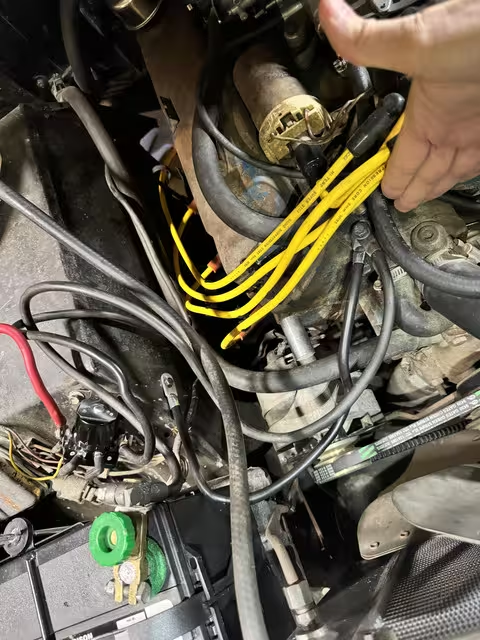Resistsance can cause them to heat up, but so can an overload or a short. A full short would theoretically have resulted in much more smoke and damage, but I don't know as I've never had one with a big battery cable.
A frozen starter, or frozen engine can do it as well. Have you turned the engine over by hand yet? Have you pulled the starter yet, to see if it spins freely on jumper cables? Or if not pulled, have you jumped directly to see if the starter spins?
Seems to me you've done all of the above, which leaves just the cables.
Can you even test them using an ohm-meter? We're talking about miliamps (testing load) vs 100+ amps (working load) variance here. Not sure what you can tell with an ohm-meter, other than using the volt-meter for testing voltage drop. Didn't you already do that as well? Guess I have to re-read the thread to see what I'm missing.
Regarding the positive cable comment, that type of lug is what I was referring to. It's a "temporary fix" type. I don't think they're actually invented as just temporary, but they are a fix.
I've used them, but the problem with them is that they can come loose, and the conductor strands are always exposed to the elements. Meaning you can get corrosion up under the jacketing where you can't see it, which might not hurt immediately, but in the long-term it's unacceptable degradation.
Hence the general consensus that this type of terminal be used temporarily to get you back on the road, until you can implement a more permanent fix.
I'm a fan of good and heavy battery cables. I've had new ones fail in a year, and old ones last for decades. Doesn't matter and it's hard to tell sometimes. And impossible to tell just by looking. A voltage drop test is probably the only legit test. The easier thing is to just replace them.
From the big screen, it actually does look like your main ground is larger than your body ground. Or at least the same gauge. And it's too long for where it's mounted, but looks like it might be just right for mounting it to the engine block underneath. You NEVER need that much excess cable flopping around under the hood.
it also looks like a semi-recent replacement, but it's hard to tell. More testing is needed.
But back to your real question, as to why it's not starting still after doing all the work you've done already, you need to go back to square one.
You used jumper cables, but were concerned that you had shorted something at one point? Or is that another discussion somewhere else? If you, do it again. But be more careful!


Right now your cables are getting hot. That's not good, but you can bypass them by jumping directly from the battery positive terminal to the starter. Does its crank? If so, move on up the line.
Remember to triple-check that the vehicle is still in Park/Neutral and that your junk is out of the way of anything that might spin!
If the starter cranks, then move up one. Leave the cable on the starter, and move the batter end down to the starter relay. What happens then? Still cranking like a big dog, or weak and whiny with smoke? Bad positive battery cable or connection.
Spins up just fine? Move the battery side to the starter cable side of the relay? What happens then?
Let us know what you find. I know using jumper cables with their big-ass alligator clamps is awkward. But do whatever you can to insulate them from touching metal. A properly sized bit of cardboard goes a long way to happy, smoke-free testing.
Paul













